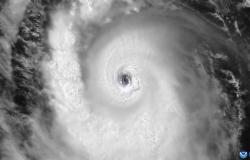L’olive grove Sicily he is thirsty. Maybe like never. Irrigating now is not just a business choice but a necessity if we want to protect ourselves from climate change. The next olive oil year in Sicily promises to be full of unknowns due to a winter that is too mild and without rain. We need to start reviewing the entire cultivation system in many parts of the island. And then there is the issue of the new intensive and super intensive systems and that of prices which have undergone a significant increase in the last year and perhaps the value of quality olive oil will never drop again.
He talks about anything and everything in an interview with Cronache di Gusto Tiziano Caruso, full professor of tree cultivation at the University of Palermo and professor of olive growing at the Department of Agricultural, Food and Forestry Sciences. Caruso attacks immediately: “In a year characterized by the almost total absence of rain, irrigation would allow us to have the right quantity of water which is around 1,500 cubic meters distributed over 12 months with a production that would thus come from 100 at 140 quintals per hectare with a certain consistency in an averagely intensive system.
What are the benefits of irrigation?
“First of all, the consistency of production, as well as the possibility of regulating the growth of the plant, through reasoned and precise irrigation. Furthermore, if I irrigate I halve the waiting time for the first production. With some varieties you can even have the first fruits after three years. Otherwise, in dry conditions, you have to understand how much precipitation there is during the year, so it will probably take double the time for the same result.”
Where should olive trees be grown?
“Today, hilly or low-lying terrain must be preferred. I am convinced that it will be necessary to move from plain areas to altitudes that reach 600/900 meters above sea level, where the climatic conditions that were previously found in the plains will be found and where the oil produced is richer in polyphenols, therefore more nutritious”.
How would you describe this year’s weather pattern?
“The most tragic and devastating thing is that what little rain there was occurred at the time of flowering which is the most delicate phase for the olive tree. The month of May has become the rainiest month of the year, so the water eliminates the pollen that settles on the olive blossom and the 30-32 degrees of sirocco that alternate with the rain dehydrate it”.
And how should we evaluate the almost total lack of winter cold?
This is precisely the reason that makes me say that we should move to the high hills. The olive tree always grows here now, it is not like other plants in which dormancy occurs and loses its leaves. The olive tree experiences the so-called vegetative stasis when it experiences low temperatures, which have now been lost here, so it is as if it were a busy individual working, who never stops and under stress, with all the consequences of the case. Another problem are the temperature peaks, which even reached 50° two years ago, in the Sciacca areas”.
In Sicily, there are approximately 156 thousand hectares of olive trees. What can you tell us about planting systems and the relative number of plants per hectare?
“We must consider that between 80% and 90% of our olive growing is traditional, so it is difficult for more than 200 plants per hectare to be exceeded. It is much more common for them to reach 150 plants per hectare, so we are talking about around 22 and a half million trees in total in our region. The problem, however, is not the number of trees. This is just one of the parameters, because by making the most of even just 20,000 hectares and using today’s technologies, we could in fact obtain the same production we have today with 150,000 hectares”.
What type of plants are there usually in Sicily in terms of age?
“A traditional olive grove is generally dry, not irrigated, with uneven-aged plants (Not of the same age, ed.). This means that in the same plot we can find century-old plants and much younger plants. This is because when olive trees were planted in the past it was done mostly for domestic consumption and the aim was not for a specialized olive grove. A representative example of a traditional system is the entire province of Messina, which appears to be the most olive-growing in Sicily, but also the one that produces the least oil, precisely due to the type of system used.
While intensive olive groves?
We can distinguish three subcategories: low, medium and high density. In the case of high-density intensive plants, in fact, the system is placed on the wall, to form a sort of hedge, at distances that can range from 4 to 5 meters between the rows and 2 and 3 meters on the row. The super intensive represents the third category and the one with the first known varieties was made with 1500 plants per hectare. Today, new, non-native varieties have been selected, which come from genetic improvement with which it is possible to reach around 3000 plants per hectare”.
Are the varieties we know suitable for any type of system? Does the different type of system used also cause a different result in terms of quality and organoleptic characteristics?
“With the traditional and intensive system, even at high density, some native varieties can be used. With the super intensive at this moment there is no usable native Italian variety. Today, however, we can consider autochthonous those that were created in Bari by cross genetic improvement and selection which gave rise to varieties such as Lecciana and Oliana. The problem that I highlighted, and which is now consolidated, is that each variety adapts to a particular planting system. For example, Nocellara del Belice cannot be used in an intensive high-density system. Starting from the assumption that, as the Americans say, quality is “fitness for use”, or what is suitable for use, we have ascertained that starting from the same variety, a type of intensive plant with low, medium and high density, does not determine differences in the oil. This obviously with the same variety and therefore organoleptic characteristics”.
Last year the price of oil reached record levels. Do you think there will be the same trend this year too or will the price drop?
“I believe that even if the price were to drop, it will do so by very little, just think of the meteorological issues and the quantity of oil available which is not sufficient to satisfy demand. Furthermore, I have personally noticed that despite the increase in prices per litre, the consumer is willing to spend money in order not to give up the product, which is also considered important in the Mediterranean diet thanks to its positive effects on health”.
Would you recommend investing in oil in Sicily to a young person approaching this world?
“Yes, obviously by exploiting the innovation and modern technology at our disposal and therefore only provided that it knows how to digitize and innovate, and that above all the infrastructures in agriculture are implemented, i.e. the water reservoir and the IT networks, with which it is possible carry out targeted insect monitoring, check the water status of the plant, the climate data, which are fundamental when you have a company with several hectares that you want to manage as best as possible over time. Today agriculture has made many steps forward, the biggest limit is the infrastructure, and this must be overcome”.
What kind of problems can be overcome?
“We know, for example, that our problem in Sicily is water. Today, therefore, with precision irrigation, sensors are placed in the plants and in this way we are always aware of how the plant is doing, when and how much water it needs. In the projects we are developing, traceability in the countryside is based on sensors, obtained thanks to an internet connection and obviously with the support of IT engineers. Twenty years ago we used sensors made by the Germans, installed on a solar panel and connected to a radio link. The data was sent to Germany and through a patented program they told us how the plant was doing.”
Is there a more suitable area in Sicily today where it is worth investing or is it entirely suitable for this purpose?
“As I was saying, I would see the new Sicilian olive growing in an altitude range ranging from 600 to 900 metres, where even insects would be stopped by low temperatures. This obviously varies the cultivars. The largest area of value is represented by South Western Sicily, which goes from Sciacca to Paceco, and which has an important olive growing tradition and oil mills with great working capacity. Also noteworthy are the Nebrodi area, the Madonie, Etna and all the mountain ranges”.
How many certified cultivars are there in the world?
“In the world collection of Cordoba, around 700 have been certified, recognized and described through DNA analysis and with their identity card. In Italy, we have 200 certified cultivars, there are around 700 accessions, and this certainly means that we have great biodiversity”.






